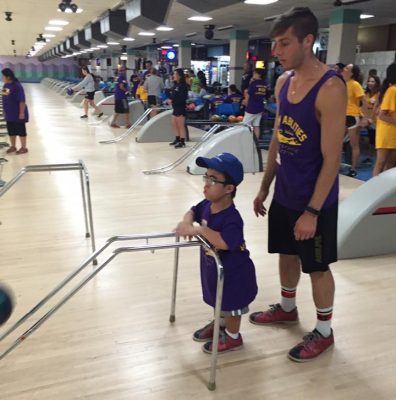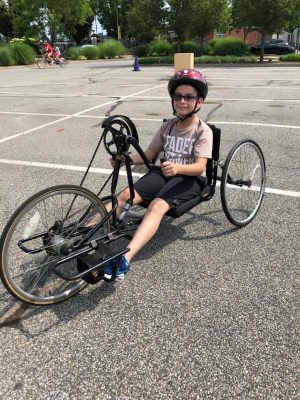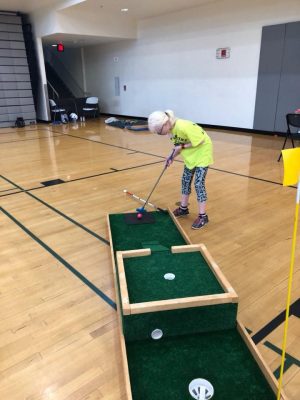By June Converse.
When I was in middle and high school, I did not enjoy volleyball. I used to find excuses to get out of playing. But I assure you, if someone had told me I wasn’t allowed to play, I would have been outraged. While I know there are obstacles to letting everyone participate, obstacles are meant to be overcome. I read one time that obstacles are the path to success. Removing obstacles so that all children – ALL children – can be part of life is MISSION CRITICAL.
I don’t know if you remember those school years. But one of the most painful parts of youth is when we are excluded. When we are put on the sidelines. Children who are visually impaired often experience this type of painful exclusion. And not just by their peers but also by their teachers.
I was a teacher for fifteen years. It’s a hard, exhausting, frustrating job. A rewarding and sometimes thankless career. And I promise you no teacher wants to exclude or ostracize. That’s just not in a teacher’s nature. So, what do we do? How do we bridge the gap between I want to include but I’m not sure how and I’m not sure I have the time to figure it out.
Universal Design for Learning (UDL)
When I asked Lauren Lieberman to explain what Universal Design is, she responded with,
“The goal is to set up every classroom – every environment – to accommodate every child. We want every student to be given a choice. Inclusion should not be an afterthought. Inclusion needs to be part of the design phase.”
Inclusion should not be an afterthought. ~ Dr. Lauren Lieberman
As an example, she described a PE class where the equipment includes basketballs for children who are visually impaired. For example, basketballs are available in different colors or textures and with beeping modifications. As she explained, “This gives the sighted students a choice too. In the planning process, the modifications become an organic part of the class and not a way to make students with disabilities stand out.”
Children who are visually impaired are capable when they have the tools – when they have choices. These choices should not be modifications – these choices should simply be available for all.
Universal Design is about providing curriculum and tools for all students – no matter their ability – to engage with peers. But Universal Design is about more than tangible assets. Universal Design is an ATTITUDE.
Universal Design is an ATTITUDE.
I asked Lauren what she sees as the biggest obstacle to Universal Design. “It’s in teacher education. We do in-services for schools but if we could make inclusion a critical component of our teacher education programs, we’d be one step ahead.”
Lesson Planning: The Entry Point for Inclusion
UDL asks teachers – at the lesson planning stage – to create and utilize a challenging curriculum with the “equipment, instruction and environmental variations to help ALL students learn”. For most teachers, inclusion is a type of add-on, an additional step, and in some cases, determining the best way to include can feel like a burden. Again, it’s important I reiterate that this is not how teachers want it to be. In our training, we are not taught to include. Oh sure, we have a class or two on working with students who have special needs. We are told to find ways to include every student. But except during those classes, I did not once have to incorporate inclusion in my sample lesson plans. (Note: teacher training varies and this is my college experience.)
When inclusion is expected and embraced as part of teacher training, inclusion is a natural component of lesson planning and not an afterthought.
What teachers need to understand is that inclusion is not just about the student with special needs. Inclusion is better for ALL students.
Universal Design for Learning In Action
There are three primary elements of UDL. Each is easy but each requires intention. And, like anything, once you master these three elements, they simply become part of the process and not a postscript.
Element One: Multiple Means of Engagement
Schools and teachers provide as much equipment as possible to maximize all student participation. Do not have a “basketball for the children who are visually impaired.” Instead provide “a variety of different basketballs for all students, one of which just happens to be for children who are visually impaired”. I hope you see the subtle difference. We aren’t labeling the basketballs for one student instead of another. We are saying all basketballs for all students. (A school can obtain specialized basketballs for about $40. Cost should not be a factor.)
The same principle applies for games. The teacher simply has rules that automatically incorporate modifications. Not a set of rules because “Johnny is blind” but a set of rules that are for everyone including Johnny. Why not incorporate goalball as a game for everyone?
Element Two: Multiple Means of Representation
In teacher education we are all taught a variety of learning modalities: visual, auditory, kinesthetic, etc. As with all of us, teachers get into habits and comfort zones. We mostly teach to the visual learner. UDL challenges teachers to be intentional and varied in their educational approaches. UDL challenges teachers to use varied instruction so often that it too becomes a habit and a comfort zone.
Element Three: Multiple Means of Action and Expression
Element two is about how the teacher teaches. Element three asks our educational system to allow a variety of methods for our students to demonstrate mastery of the material. Maybe the student verbally explains how to do X. Maybe the student chooses the correct picture of a skill or game. Maybe the teacher develops even more creative ways for mastery demonstration.
Beyond the Visually Impaired
While Camp Abilities and Dr. Lieberman focus most of their efforts and research on children who are visually impaired, UDL is UNIVERSAL. No matter how you see, hear, speak, move, read and write, we want to be able to engage with our peers. We want to be included. We want to learn and participate. We want to be able to demonstrate our skills and mastery.
Our children – regardless of ability – deserve a Universal Design for Learning. Educators want this too. We need to find ways to overcome the obstacles. We need to find the path.
For more information:
This seven-minute video demonstrates the use of the Inclusion Rating Scale. This tool assists teachers in lesson planning to ensure all students are taking part in physical education.
This four-minute video is a recap of the 3 elements of UDL discussed above.
Lieberman, L.J., Grenier, M., Brian, A., & Arndt, K. (2020). Universal design in physical education. Champaign, IL: Human Kinetics.
~submitted by June Converse





